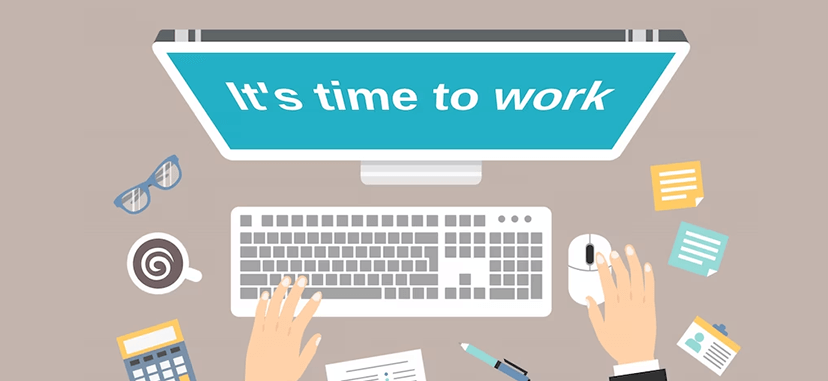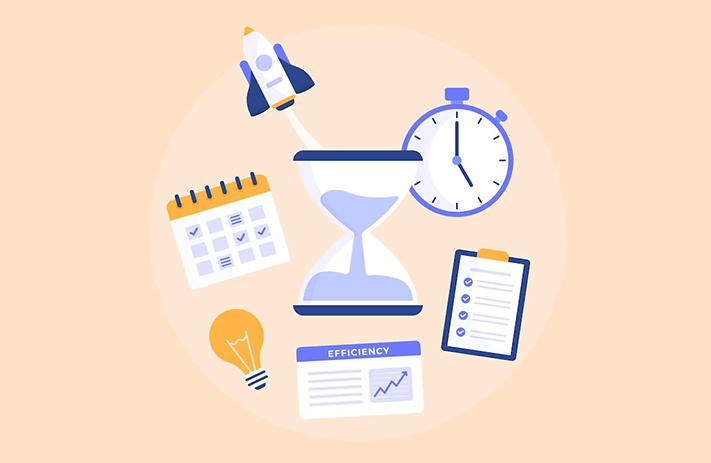
Click the button to start reading
Mindfulness at Work: Your Secret Weapon for a More Productive and Peaceful Workday
Why are you reading this? Are you seeking spiritual awakening, or are you trying to alleviate the anxiety that seems to be an inevitable part of your workday? Perhaps it’s a bit of both.
Regardless of your reasons, you’re here because you’ve heard about this practice called “mindfulness,” and you’re curious about how it can transform your work life.
Mindfulness is more than a buzzword in our culture; it’s a practice gaining momentum in various aspects of our lives, including our workplaces. And for a good reason. In a world where our attention is constantly pulled in numerous directions, mindfulness offers a way to bring us back to the present, to help us focus, and to manage the stress that often accompanies our modern, fast-paced work lives.
Let’s be honest, the workplace can be a minefield of distractions, pressures, and demands. Deadlines loom, emails pile up, and before you know it, stress levels are soaring. It’s no wonder that mindfulness has become more than just a trend—it’s an essential tool for navigating the challenges of the modern workplace.
So, how can mindfulness assist you? More importantly, how can you practice mindfulness in a way that’s practical and applicable to your workday?
This article aims to bring clarity to these questions. By the end of this journey, you’ll have a deeper understanding of mindfulness, practical tips to incorporate it into your workday, and insights into building a mindful work culture.
So, are you ready to transform your workday and perhaps even your life? Let’s dive in.

Part 1: Let’s Get to Know Mindfulness at Work
Before we explore the practicalities of mindfulness at work, it’s essential to understand its roots and the significant contributions made by various authors and researchers in the field.
Why is this important? Because understanding the pioneers of mindfulness and their work provides a solid foundation and a deeper comprehension of the practice. It also allows you to appreciate the scientific backing and extensive research supporting mindfulness, elevating it beyond a mere buzzword or trend.
Mindfulness, as a practice, originates from ancient Buddhist meditation. However, it’s not solely about spirituality. It has become a subject of serious scientific study and has permeated modern psychology and healthcare.
Dr. Dan Siegel, who holds a clinical professorship in psychiatry at the UCLA School of Medicine and serves as the executive director of the Mindsight Institute, has significantly advanced mindfulness research.
His work has shed light on the positive effects of mindfulness on mental health and well-being. By familiarizing yourself with Siegel’s research, you can gain a deeper understanding of the transformative power of mindfulness on mental health.
Jon Kabat-Zinn, a professor emeritus at the University of Massachusetts Medical School, has earned acclaim for his pioneering work in mind-body medicine and the creation of the Mindfulness-Based Stress Reduction (MBSR) program.
This program has gained widespread recognition for its effectiveness in mitigating stress and anxiety, demonstrating the practicality of mindfulness, particularly in the realm of stress management.
Dr. Richard Davidson, a professor of psychology and psychiatry at the University of Wisconsin-Madison, has dedicated his research to understanding the neural underpinnings of emotion and emotional style, as well as exploring methods to foster human flourishing, including meditation and related contemplative practices.
Davidson’s research emphasizes the importance of mindfulness in managing emotions and promoting overall well-being.
With this understanding of mindfulness and its origins, let’s delve into how it applies to our work lives.
So, What Exactly is Mindfulness at Work?
You’ve likely heard the term “mindfulness at work” in business circles or seen it in the latest productivity articles. But what does it genuinely mean?
Picture this scenario: You’re in the midst of a hectic workday, your inbox is overflowing, and you have a meeting in 10 minutes. Amidst all this chaos, you find a moment of calm—a moment where you’re fully present and focused on the task at hand.
That, my friend, is mindfulness at work. In more formal terms, mindfulness at work is the practice of being fully present and engaged in what you’re doing, free from distraction or judgment, and with a soft and open mind. It’s about tuning in rather than zoning out.
Why Should You Care About Mindfulness at Work?
Now, you might be thinking, “That sounds nice, but I’ve got a business to run. Why should I care about mindfulness?”
Well, let’s consider the facts. Research shows that mindfulness can reduce stress, improve focus, enhance emotional intelligence, and boost job satisfaction. Impressive, isn’t it?
But let’s bring it down to a more personal level. Have you ever found yourself reading the same line in a report repeatedly because you can’t focus? Or snapping at a colleague because you’re overly stressed? Mindfulness can help with that.
By practicing mindfulness, you can manage your stress levels, keep your focus sharp, and even become a better colleague and leader. And who wouldn’t want that?
So, whether you’re a CEO, a manager, or an intern, mindfulness at work is something you can’t afford to ignore. It’s not just a trend; it’s a tool for success. And in the next sections, we’re going to show you how to wield it.

Part 2: How to Make Mindfulness Part of Your Workday
Now that we’ve established what mindfulness at work is and why it matters, let’s dive into the practical side of things. How can you bring mindfulness into your workday? And what exercises and activities can you do to cultivate mindfulness? Let’s find out.
Your First Steps: How to Bring Mindfulness into Your Workday
So, you’re ready to bring mindfulness into your workday. But where do you start? Well, it’s simpler than you might think.
First, start by setting an intention. Decide to be more present and engaged in your work. This doesn’t mean you have to meditate for hours on end. It could be as simple as deciding to take a few deep breaths before starting a task or choosing to focus fully on one task at a time.
Next, create a mindful workspace. This could mean decluttering your desk, setting up a plant, or even just adjusting your chair so you’re comfortable. A calm and organized workspace can help promote a mindful state of mind.
Lastly, make use of technology. There are numerous apps and tools out there designed to help promote mindfulness. From meditation apps like Headspace and Calm to productivity tools like Forest and Focus@Will, technology can be your ally in your mindfulness journey.
Mindfulness Exercises: Your Secret Weapon at Work
Mindfulness exercises are your go-to tools for cultivating a mindful mindset during your workday. They’re straightforward, require no special gear, and can be done anytime, anywhere.
Here are five exercises you can try:
- One-Minute Breathing: This exercise involves dedicating one minute of your time to focus solely on your breathing. Close your eyes, breathe in deeply, hold for a moment, then exhale slowly. Do this a few times and observe the calming effect it has on your mind.
- Scan Your Body: This exercise requires you to mentally scan your body from head to toe, noting any sensations or areas of tension. This practice can help increase your body awareness and promote a sense of relaxation.
- Listen with Intent: This exercise is all about tuning into the sounds around you. It could be the rhythmic hum of your computer, the distant chatter of colleagues, or even the sound of your own breath. The goal is to listen without judgment or analysis.
- Observation Exercise: Pick an object within your sight and study it for a minute or two. Notice its color, texture, shape, and other details. This exercise can help sharpen your focus and attention to detail.
- Stretch Mindfully: Take a few moments to stand up and stretch your body. Pay attention to the feeling of your muscles stretching and releasing tension. This is a great way to break up long periods of sitting and promote physical mindfulness.
Mindfulness Activities: Making the Most of Your Breaks
Mindfulness activities, unlike exercises, are less formal and can be seamlessly integrated into your daily routine.
Here are five activities you can do during your breaks to foster mindfulness:
- Eating with Awareness: This involves eating your meal slowly, savoring each bite, and paying attention to the taste, texture, and aroma of the food. This practice can enhance your mealtime experience and promote mindful eating habits.
- Walking with Presence: This involves walking at a slow pace, paying attention to the sensation of your feet touching the ground and the feeling of the wind against your skin. This can be a refreshing way to incorporate exercise and mindfulness into your day.
- Reading Mindfully: Choose a book or an article and read it with full attention. Pay attention to each word, each sentence, and the overall message of the text. This can be a relaxing and educational way to practice mindfulness.
- Breathing Exercise: Dedicate a few minutes to focus on your breath. Notice the sensation of the air entering and leaving your body. This simple activity can help you relax and refocus your mind.
- Doodling for Relaxation: Grab a piece of paper and a pen and start doodling. Let your hand move freely without any specific goal or plan. This can be a fun and creative way to practice mindfulness.
Conclusion: Wrapping Up and Moving Forward
We’ve journeyed through the concept of mindfulness at work, understanding its roots, its benefits, and how to incorporate it into our daily work lives. But remember, this is just the beginning.
Mindfulness at work isn’t merely a passing trend. It’s a scientifically-backed practice that can reduce stress, improve focus, and make us better colleagues and leaders. It’s a personal journey that requires practice, patience, and commitment.
As you continue this journey, remember that consistency is key. Regular practice will help you reap the benefits of mindfulness. Keep learning, be it through books, workshops, or mindfulness groups. And most importantly, be patient with yourself.
If you’re feeling inspired, consider advocating for mindfulness in your workplace. Share the research and your personal experiences. Propose small, manageable changes like a weekly mindfulness session or a quiet room for mindfulness exercises.
As we conclude, remember that your mindfulness journey doesn’t end here. It’s a continuous process of learning and growing. So, keep practicing, learning, and most importantly, being mindful.
















